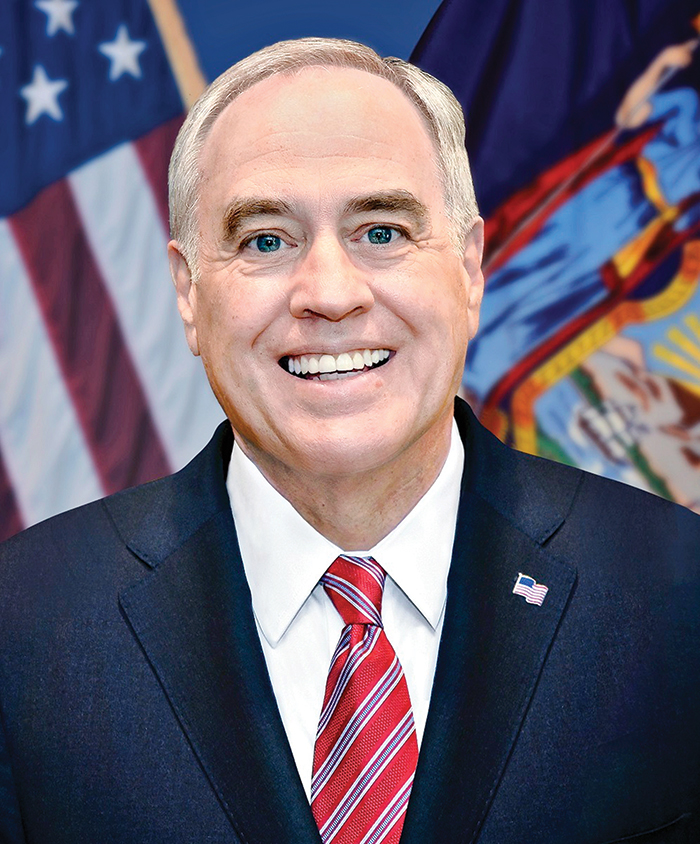Photo Courtesy of Wikimedia/State Comptroller’s Office
State Comptroller Tom DiNapoli
By Forum Staff
The City’s $104.8 billion preliminary Fiscal Year 2024 budget has benefitted from better-than-projected revenue collections, the reallocation of unused federal pandemic relief funds, and savings initiatives, according to a report released Thursday by State Comptroller Tom DiNapoli.
DiNapoli’s office assumes that a number of the fiscal risks the city currently faces will continue, increasing the planned budget gap to about $8.9 billion in FY 2025 and $13.9 billion in FY 2027 (18 percent of city-fund revenues), even when adjusting for stronger revenue collections.
The city continues to face uncertainty over the national economy and its impact on financial markets, its own lagging recovery and the costs associated with asylum seekers. These fiscal risks remain difficult to quantify because they are not fully reflected in current budget figures and are likely to increase the city’s budget gaps in the future.
The city’s recent contract settlement with the District Council 37 union gives clarity to collective bargaining costs, which had been an area of budgetary risk in its initial financial plan. If it is ratified and sets a pattern for other labor agreements, total labor costs would increase by $4.7 billion in FY 2027 and will likely be higher thereafter when fully annualized.
The FY 2024 budget would continue to phase out federal pandemic aid, which is projected to decline from its peak of about $10 billion in FY 2022 to $2.4 billion in FY 2024. The city will likely have to provide its own funding for new or expanded pandemic-era services such as mental health programming, enhanced rental- and food-related income supports and access to legal counsel, if it intends on continuing those services. The mayor and City Council have also suggested new programs since the release of the January financial plan that could create new fiscal cliffs and require additional funding.
The city assumes budget gaps will reach $3.2 billion in FY 2025 and grow to nearly $6.5 billion in FY 2027. As a share of city fund revenues, the remaining out-year gaps projected by the city would average 6.3 percent, the highest level at this point in the budget cycle since FY 2012.
Other risks, in addition to the influx of asylum seekers and collective bargaining costs, include higher-than-projected costs for social services, education and operating subsidies to the Metropolitan Transportation Authority. These fiscal concerns do not include the impact of the proposed state budget.
DiNapoli’s report notes growth forecasts for the nation’s economy, which are linked to the performance of the city’s financial sector, remain troublesome and numerous markers suggest a continued economic slowdown is likely nationally. The city gained jobs at a greater rate in 2022 than the country, but its unemployment rate still lags the nation (5.8 percent vs. 3.5 percent as of December).
If tax revenues do not exceed projections and other sources of funding are not made available to fund existing needs, the city may have to build on its recent cost-savings efforts. Much of the savings in FY 2024 and on a recurring basis are associated with reducing head count. While these savings have helped the city’s fiscal picture, questions over the delivery of services have emerged. The city must take care to balance any additional savings made through staffing changes with the risk of deteriorating core services and providing timely aid to those in need.

